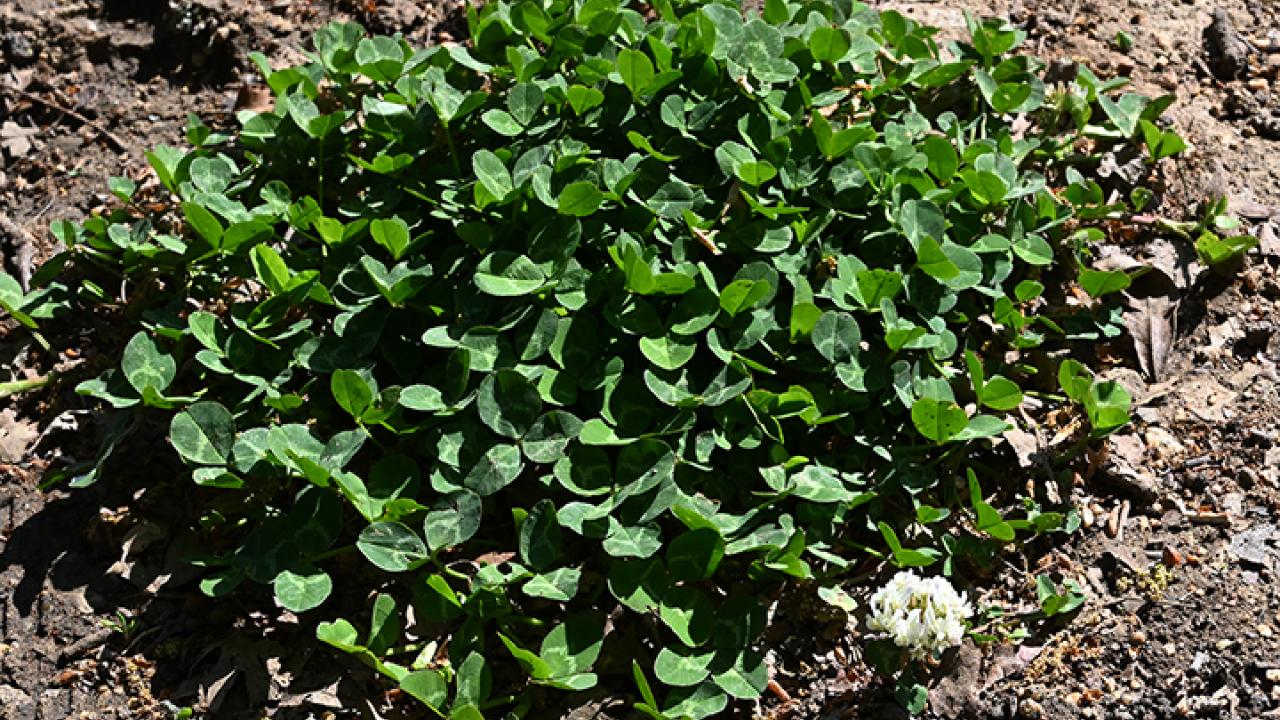A newly published global study of white clover, Trifolium repens, shows how the plant has repeatedly adapted to environmental changes in 160 cities around the world. The study was published March 17 in Science.
White clover is considered an ideal evolutionary organism to study: it is one of the most rapidly evolving species of flora and one of the most widespread. The plant adapts well in both rural and urban environments throughout the world, from Norway to Mexico to India. Often used as a cover crop, it a good source of nitrogen and a good nectar source for bees, but it is considered invasive when it pops up in urban lawns.
The study was carried out by the Global Urban Evolution (GLUE) Project team led by evolutionary ecologist Marc Johnson, a professor of biology and director of the Centre for Urban Environments at the University of Toronto, Mississauga. The 287-member team included Emily Meineke, assistant professor of urban landscape entomology at the UC Davis Department of Entomology and Nematology, and Joanna Griffiths, postdoctoral scholar in the UC Davis Department of Environmental Toxicology. It is the largest scale study of parallel evolution and urban adaptation ever performed, Johnson said.
Cyanide a defensive toxin
Team members performed assays to determine the plant's production of a defensive toxin, hydrogen cyanide (HCN). Johnson’s group has previously shown that white clover in urban environments in North America evolves to produce less HCN than in rural areas. The study reproduced this finding worldwide. Sampling 110,019 plants in 160 cities, the team found that the ability to HCN was affected by both climate and urbanization. White clover is less likely to produce HCN in colder environments but more likely to do so in rural areas, the research shows.
“Our results demonstrate that urbanization leads to adaptation at a global scale,” the team wrote.
Both Meineke and Griffiths worked on the project when they were doctoral students: Meineke at North Caroline State University (NCSU), Raleigh, and Griffiths at Louisiana State University (LSU), Baton Rouge.
“Increasingly, it is clear that we are living in a time when humans are the dominant drivers of biotic change globally,” said Meineke, who joined the faculty at UC Davis in 2020. “Somehow, we still don't understand how we are affecting the species we see every day, in part because biologists have only recently become aware of our complex effects on species that live in our own habitats.”
Urbanization is a global phenomenon, in which thousands of cities cover up to three percent of Earth's land surface, according to the GLUE Project website. Half of the world's population lives in urban environments, but by 2050, that figure is expected to jump to 70 percent.
The project was supported by the Natural Sciences and Engineering Research Council of Canada (NSERC).
